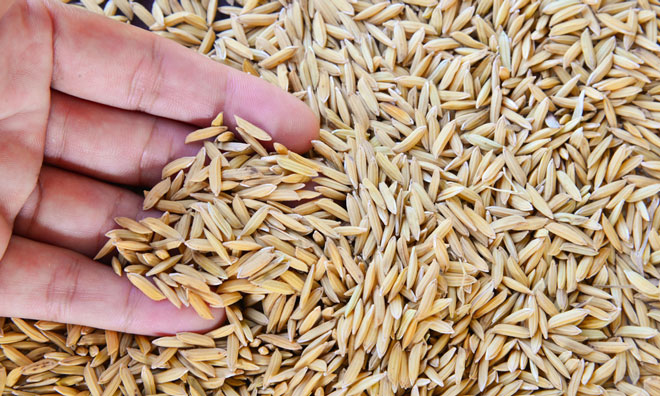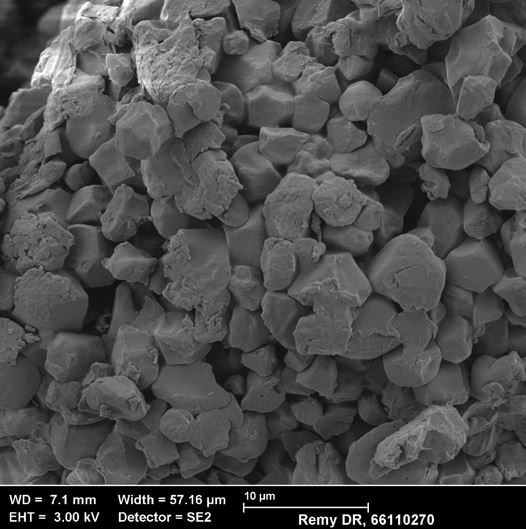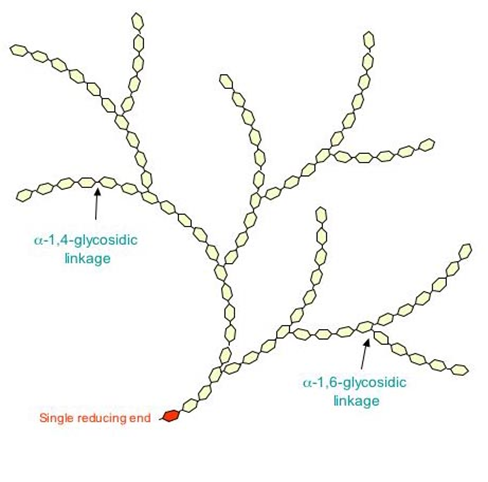Rice starch as a unique, natural and invaluable food source
- Like
- Digg
- Del
- Tumblr
- VKontakte
- Buffer
- Love This
- Odnoklassniki
- Meneame
- Blogger
- Amazon
- Yahoo Mail
- Gmail
- AOL
- Newsvine
- HackerNews
- Evernote
- MySpace
- Mail.ru
- Viadeo
- Line
- Comments
- Yummly
- SMS
- Viber
- Telegram
- Subscribe
- Skype
- Facebook Messenger
- Kakao
- LiveJournal
- Yammer
- Edgar
- Fintel
- Mix
- Instapaper
- Copy Link
Posted: 9 February 2017 | Kevin Bael, Product Manager, Specialty Rice Ingredients, Beneo | 2 comments
As part of the New Food ‘Health Ingredients Month’, we hear exclusive analysis from Beneo’s Kevin Bael into the unique, natural value of rice starch…


Welcome to New Food‘s ‘Health Ingredients Month’. Throughout the online series we will be providing exclusive insight from Mintel, Innova Market Insights and leading food ingredients consultants as well as from Beneo, Kerry and Arla. Our aim is to pinpoint in particular how rapidly changing consumer trends are dictating how the food and beverage industry is evolving.
For an initial look at who is directly contributing, we invite you to take a look at our graphic below and we hope that you enjoy the continuation of the series throughout 2017.
In this article, we asked Kevin Bael, Product Manager, Specialty Rice Ingredients at Beneo to describe just how useful rice starch could be as a natural, nutritious food source.


Rice is a major food staple, being one of the most abundant crops produced worldwide with world paddy rice production projected to reach 748.0 million tonnes (496.7 million tonnes, milled basis) in 2016.1
The broad range of rice varieties around the world, ranging from aromatic varieties like Jasmin and Basmati, over non-fragrant Japonica and Indica, gives rise to a wide variety of rice dishes.
However, aside of direct consumption, rice is also further milled into (brown) rice flour, or its components like starch and protein are extracted and used as natural ingredients in food products like baked goods, soups and sauces, dairy products, infant food, etc.
Natural and recognisable
Naturalness and transparency are key for today’s consumers, who are increasingly concerned about what goes into their food, as well as how it is made. Figures do show that in 2016, almost every third product launch carries a clean label claim of some sort in Europe.2
Rice has already been long time part of people’s daily diet, and it makes rice ingredients scoring very high on the consumer’s list of familiarity and naturalness when it comes to food ingredients. It makes rice starch very popular when developing and launching new food products claiming “all natural”, “organic”, “gluten-free”, “non-GMO”, … and as such deserves its shelf space.
The uniqueness of rice starch
Unlike other food starches commonly used in the food industry, rice starch is unique in its starch granule size and molecular structure of both its amylose and amylopectin (Table 1).
Table 1: Characteristics of starch granules of different botanical origin
|
rice starch |
wheat starch |
corn starch |
tapioca starch |
potato starch |
|
|
size (µm) |
2-8 |
3-40 |
15-25 |
20-35 |
15-80 |
|
shape |
polygonal |
oval |
hexagonal |
hexagonal (truncated) |
oval |
|
color |
very white |
greyish white |
yellowish white |
greyish white |
white |
|
taste |
neutral |
cereal taste |
protein taste |
light off-taste |
potato taste |
|
gel structure |
soft and creamy |
firm |
firm |
sticky |
sticky |
Rice starch granules are the smallest among all commercially available food starches, with granule sizes in the range of about 2 to 8 micron. Rice starch granules have angular and polygonal shapes and a smooth surface (Figure 1). Within the starch granules, rice starch is arranged in concentric rings with A-type crystallinity and channels. Rice amylose has an average degree of polymerisation (DP) of 920-1110. Unlike amylose from other botanical sources, rice amylose is branched with 2 to 5 chains on average.3


Figure 1: SEM picture of regular rice starch
Rice amylopectin is a highly branched polymer with a DP of 8200-12800 (Figure 2).3 Its uniqueness lies in its low amount of mid-sized end standing branches, also called C chains. A low presence of C chains is linked to a reduced tendency for retrogradation.4
The starch content, amylose / amylopectin composition and its characteristics vary with botanical variety and are influenced by climatic and soil conditions during grain development.
Based on the botanical variety, be it for example Japonica or Indica, amylose contents can vary from 2-3% up to 35%, giving a multitude of possibilities when it comes to creating tailor-made gels, just playing around with different native starch varieties.


Figure 2: Branched structure of amylopectin
The unique structure of rice amylopectin gives rice starch exceptional shelf-life stability, and the branched rice amylose and small starch granule size make rice starch an ideal starch when it comes to creating soft and creamy textures. Due to its structural characteristics, rice starch also belongs to the group of highly digestible starches, making it a popular ingredient in infant food products.
Soft gel structures with “melt-in-mouth” properties
Linear amylose easily leaches out of the starch granule upon heating, and re-aligns very easily in the continuous water phase upon cooling to form hard gels like wheat starch and corn starch do. Rice amylose however, being branched, stays to a higher extend within the starch granule structure during heating. On top, the amylose which leaches out of the starch granule into the surrounding water phase, remains more unstructured upon cooling, due to steric hindrance of the branches. This results in the formation of a soft gel, which is easily broken down upon mastication, creating a “melt-in-mouth” perception. It explains why rice starch has its popularity as gelatin replacer in for example dairy desserts, forming cuttable gels with a creamy texture upon eating.
Fat mimetic
Many European consumers are looking for fat and sugar reduced products, yet few prepared to sacrifice taste and texture, manufacturers are increasingly facing the challenge of finding ingredients that deliver the desired texture and great taste. The granule sizes of rice starch are ranging from 2 to 8 micron (Table 1) and thus have the same order of magnitude as fat droplets commonly present in oil/water (O/W) food emulsion systems. This is why rice starch has a high potential to create smooth, creamy textures in fat-reduced products.
Whitening, smoothening agent
On top, the small granule size in combination with its neutral taste and white colour, makes rice starch very popular as whitening and smoothening agent in confectionery coatings of chocolate lentils, liquorice and chewing gum, and bakery icings and fillings. A natural ingredient able to replace titanium dioxide, being a commonly used additive in the food industry but more and more in the spotlight due to health concerns raised related to its link with nanomaterials.
Shelf-life and freeze-thaw stability
The mid-sized C chains of amylopectin are linked to retrogradation, re-alignment of polysaccharide chains, reducing the water binding capacity and expelling water from the starch granule. The result being instability during freeze-thaw cycles, or after prolonged storage of the starch paste or gel. The low presence of these mid-sized end standing branches in rice amylopectin gives rise to a superior stability of rice starch compared to other food starches from other botanical sources. It makes rice starch the first choice in food categories like infant jars, fruit preparations, frozen meals,… where improving shelf-life and freeze-thaw stability with natural ingredients is of key importance.
References
- Rice Market Monitor, Volume XIX Issue No. 4, December 2016 (FAO)
- Innova Market Insights
- Wani A.A., Singh P., Shah M.A., Schweiggert-Weisz U., Gul K. & Wani I.A. (2012). Rice starch diversity: Effects on structural, morphological, thermal, and physicochemical properties – a review. Comprehensive Reviews in Food Science and Food Safety, 11(5), p417-436
- Vandeputte G.E., Vermeylen R., Geeroms, J. & Delcour J.A. (2003). Rice starches III: Structural aspects provide insight in amylopectin retrogradation properties and gel texture. Journal of Cereal Science, 38, p61-68
New Food’s ‘Health Ingredients Month’
Tom Clifford, PhD, Sport and Exercise Nutrition, University of Northumbria – Can beetroot help relieve muscle pain after exercise?
Petr Menšík, Manager, EU Affairs, ECCO, The European Consulting Company – Defining the term ‘natural’ in food and beverage
Claus Andersen, Category & Application Manager, Arla Foods Ingredients – How dairy can lead a new waste revolution
Alex Murtough, Field & Marketing Manager, Oppo – Healthy food? It’s out of reach for most of us
Kevin Bael, Product Manager, Specialty Rice Ingredients, Beneo – The unique, natural value of rice starch
Andrea Zangara, Centre for Human Psychopharmacology, Swinburne University – Plant-based ingredients and their cognitive benefits










Dear Sirs,
I, M. Siddiqul Anam, Business Development Manager at “M/s. Abdul Rauf Abdul Aziz”, Karachi, Pakistan, have been entrusted, by my company, with the task of trying to find manufacturers of Maize Starch who could supply us the product in very decent quantities at regular intervals and on long term basis.
I take this opportunity to seek your kind cooperation in finding appropriate manufacturers / suppliers in your country or even beyond, with their contact details (E-mail etc.), so that I may be able to establish contact with them in mutual business interest.
As for our company, it has gained remarkable fame, locally as well as internationally, for being one of the most reliable in both categories (imports & exports), well registered with Karachi Chamber of Commerce & Industry. and few other authentic trade bodies under its belt.
I do hope to receive your favourable response soon and I shall ever remain bound in gratitude for your kind favour for sure.
Kind Regards,
MUHAMMAD SIDDIQUL ANAM
Business Development Mgr.
M/s. ABDUL RAUF ABDUL AZIZ
Email: [email protected]
Office: Suite # G 19/20, Ground Floor,
Hussain Trade Center,
Altaf Hussain Road,
New Chally,
Karachi – 74000,
Pakistan.
Land-line: +92 21 32626528 & +92 21 32639156
Web: http://www.raufaziz.com
Cell # +92 346 2085185
I’ve been exploring for a little for any high quality articles or weblog posts
in this sort of house . Exploring in Yahoo I finally
stumbled upon this web site. Reading this information So i’m glad to express that
I’ve an incredibly good uncanny feeling I found out just what I needed.
I such a lot undoubtedly will make certain to don?t omit this website and provides it a glance on a relentless basis.